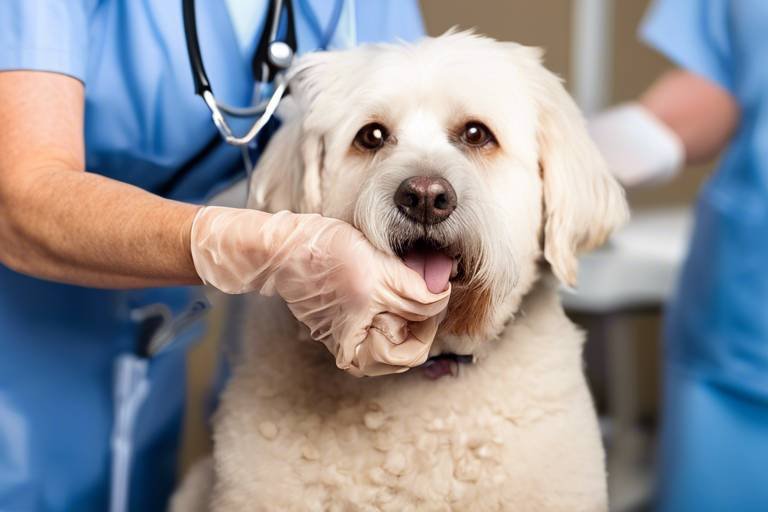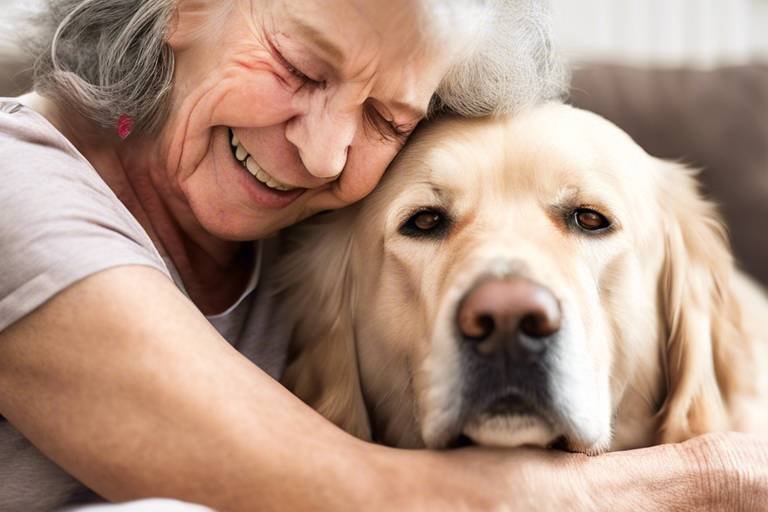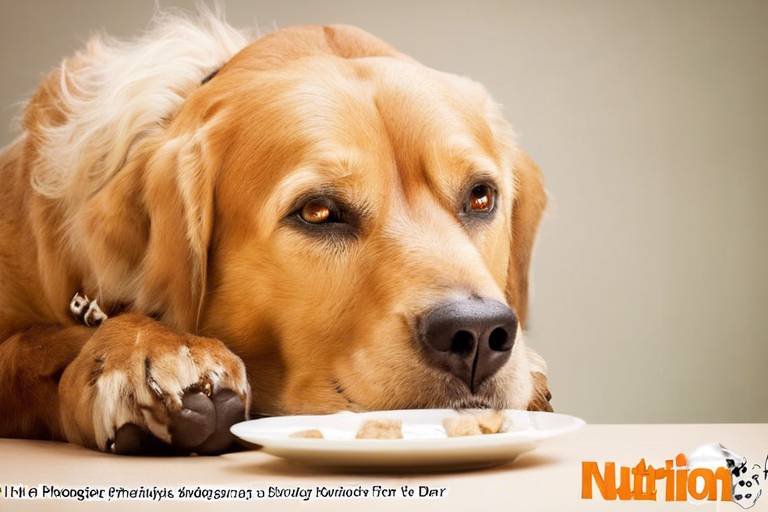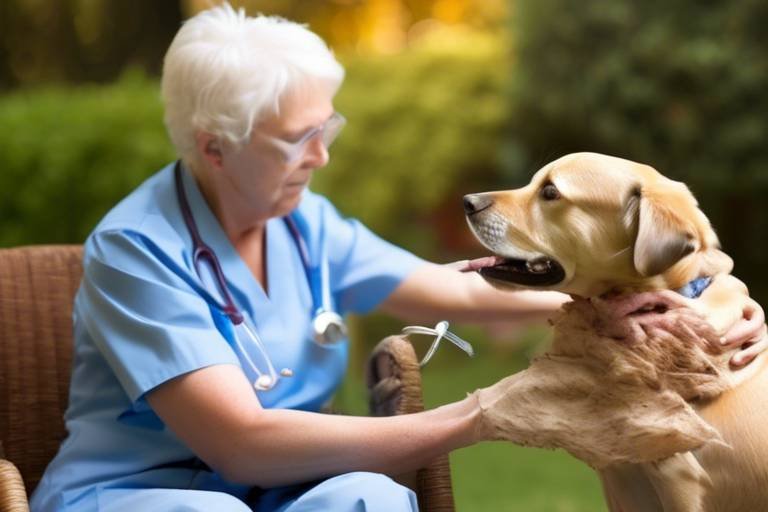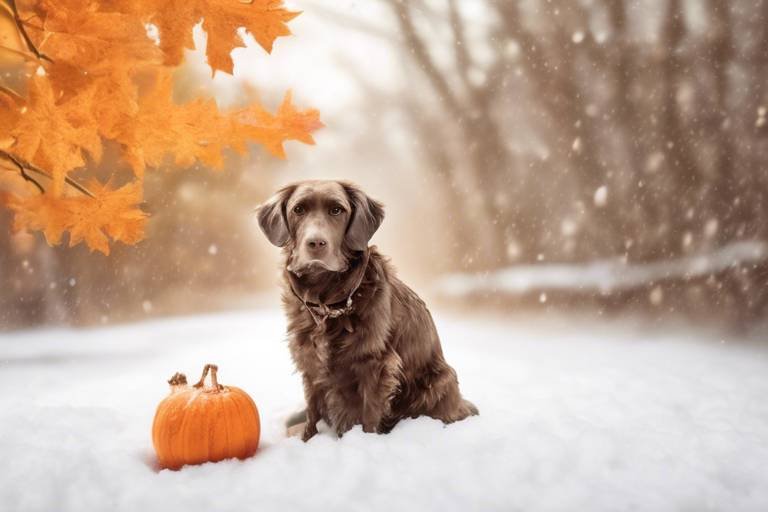How to Transition Your Senior Pet to New Food
Transitioning your senior pet to new food can feel like navigating a maze. With so many options available, it’s easy to feel overwhelmed. But fear not! This guide is here to help you make the switch as smooth as possible. Just like humans, our furry companions can be picky eaters, and their digestive systems may not handle sudden changes well. So, how do you ensure that your beloved pet enjoys their new meal while keeping their tummy happy? Let’s dive into the essentials of transitioning your senior pet to new food!
As pets age, their bodies change, and so do their nutritional requirements. Senior pets often need a diet that is lower in calories but higher in fiber. This helps them maintain a healthy weight while ensuring they get the necessary nutrients to support their aging bodies. Key nutrients to focus on include:
- Protein: Essential for maintaining muscle mass.
- Omega fatty acids: Great for skin and coat health.
- Antioxidants: Help combat oxidative stress and support immune function.
- Fiber: Aids in digestion and helps prevent constipation.
Understanding these needs is crucial as you embark on the journey of finding the perfect food for your senior pet. Think of it as upgrading their diet to a luxury model that meets their unique requirements!
Selecting the right food is like picking the right outfit for a special occasion; it needs to fit well and feel good. When choosing food for senior pets, consider the following factors:
- Ingredients: Look for high-quality sources of protein and avoid fillers.
- Caloric content: Ensure it matches your pet's activity level.
- Health conditions: Some pets may require special diets due to health issues like kidney disease or arthritis.
Each pet is unique, and what works for one may not work for another. It's essential to read labels and perhaps even try a few different brands before settling on the best option.
As pets age, they can develop food allergies or sensitivities, which can be a real pain in the neck (or tummy!). Watch for signs such as:
- Itchy skin or excessive scratching
- Gastrointestinal upset, like vomiting or diarrhea
- Ear infections or redness
If you suspect your pet has a food allergy, it's time to do some detective work. Avoid common allergens like beef, chicken, dairy, and wheat, and consider switching to a limited ingredient diet to pinpoint the issue.
Understanding common allergens can help you make informed choices. Here are some typical ingredients that may cause allergic reactions in senior pets:
| Allergen | Symptoms | Alternatives |
|---|---|---|
| Beef | Itching, gastrointestinal upset | Fish, lamb |
| Dairy | Diarrhea, skin issues | Coconut oil, almond milk |
| Wheat | Digestive problems, ear infections | Rice, quinoa |
Before making any drastic changes to your pet's diet, consulting your veterinarian is crucial. They can provide tailored recommendations based on your pet's health history and dietary needs. Think of your vet as your pet's personal nutritionist, guiding you through the maze of pet food options!
A gradual transition to new food is vital to prevent digestive upset. Start by mixing a small amount of the new food with your pet’s current food. Over the course of a week or two, gradually increase the amount of new food while decreasing the old. This slow approach allows your pet's digestive system to adjust without causing discomfort.
After transitioning, keep a close eye on your pet. Are they enjoying their new food? Are there any signs of digestive issues? Look for symptoms like:
- Vomiting
- Diarrhea
- Loss of appetite
If you notice any of these signs, it might be time to consult your vet. Remember, every pet is different, and what works for one may not work for another!
Recognizing signs of digestive upset is crucial. If your pet experiences any of the above symptoms, it could indicate that the new food isn't sitting well with them. Address these issues promptly to ensure your pet stays healthy and happy.
Changes in behavior and energy can signal how well your pet is adjusting to their new diet. Are they more playful? Do they seem lethargic? Pay attention to these changes, as they can provide insight into your pet's overall well-being.
Q: How long should I take to transition my pet to new food?
A: A gradual transition over 7-10 days is recommended to minimize digestive upset.
Q: What should I do if my pet refuses to eat the new food?
A: Try mixing in a little bit of their favorite treats or wet food to entice them. If they still refuse, consult your vet.
Q: Can I switch my senior pet to a grain-free diet?
A: Grain-free diets can be beneficial for some pets, but it's essential to consult your veterinarian, especially if your pet has specific health conditions.
In conclusion, transitioning your senior pet to new food doesn’t have to be a daunting task. With a little patience, observation, and guidance from your vet, you can ensure your furry friend enjoys their meals while staying healthy and happy. Happy feeding!

Understanding Your Senior Pet's Nutritional Needs
As our beloved pets age, their nutritional requirements shift significantly, much like how we might crave different foods as we grow older. Senior pets often face various health challenges, and their diets need to reflect these changes to support their overall well-being. It’s essential to recognize that what worked for them in their younger years might not suffice now. So, what should you keep in mind when it comes to your senior pet's diet?
First and foremost, senior pets typically require higher protein levels to help maintain their muscle mass. As they age, they may lose muscle more easily, and a protein-rich diet can help combat this issue. Additionally, the quality of protein becomes paramount; easily digestible sources like chicken, fish, or eggs are ideal. This is where reading labels comes into play—ensure that the primary ingredient is a high-quality protein source.
Moreover, fiber is another critical component of a senior pet's diet. It aids in digestion and helps prevent constipation, which can be a common issue in older pets. Look for foods that contain natural fiber sources such as beet pulp or pumpkin. These ingredients not only support digestive health but also assist in maintaining a healthy weight, which is crucial for senior pets that may be less active.
It's also vital to consider fat content. While fat is a necessary component for energy, senior pets often require lower fat levels to prevent obesity, especially if they are less active. However, healthy fats, like omega-3 fatty acids found in fish oil, can promote joint health and reduce inflammation, making them beneficial for older pets suffering from arthritis or other joint issues.
Another aspect to consider is hydration. Older pets may not drink as much water as they should, which can lead to urinary tract issues or kidney problems. Incorporating wet food into their diet can help increase their fluid intake. It's like adding a splash of water to your favorite dry cereal; it makes it easier to consume and more enjoyable!
Lastly, it's essential to monitor any specific health conditions your senior pet may have, such as diabetes or kidney disease. These conditions may require specialized diets. For example, pets with kidney issues often benefit from lower protein diets, while diabetic pets may need low-carb options. Consulting with your veterinarian can help tailor a diet that meets your pet's unique needs.
In summary, understanding your senior pet's nutritional needs is not just about feeding them; it's about providing them with the right fuel to thrive in their golden years. By focusing on high-quality proteins, adequate fiber, healthy fats, and hydration, you can ensure that your furry friend enjoys a healthy and active life well into their senior years. Remember, every pet is unique, so take the time to observe their specific needs and consult with your vet for the best dietary choices.
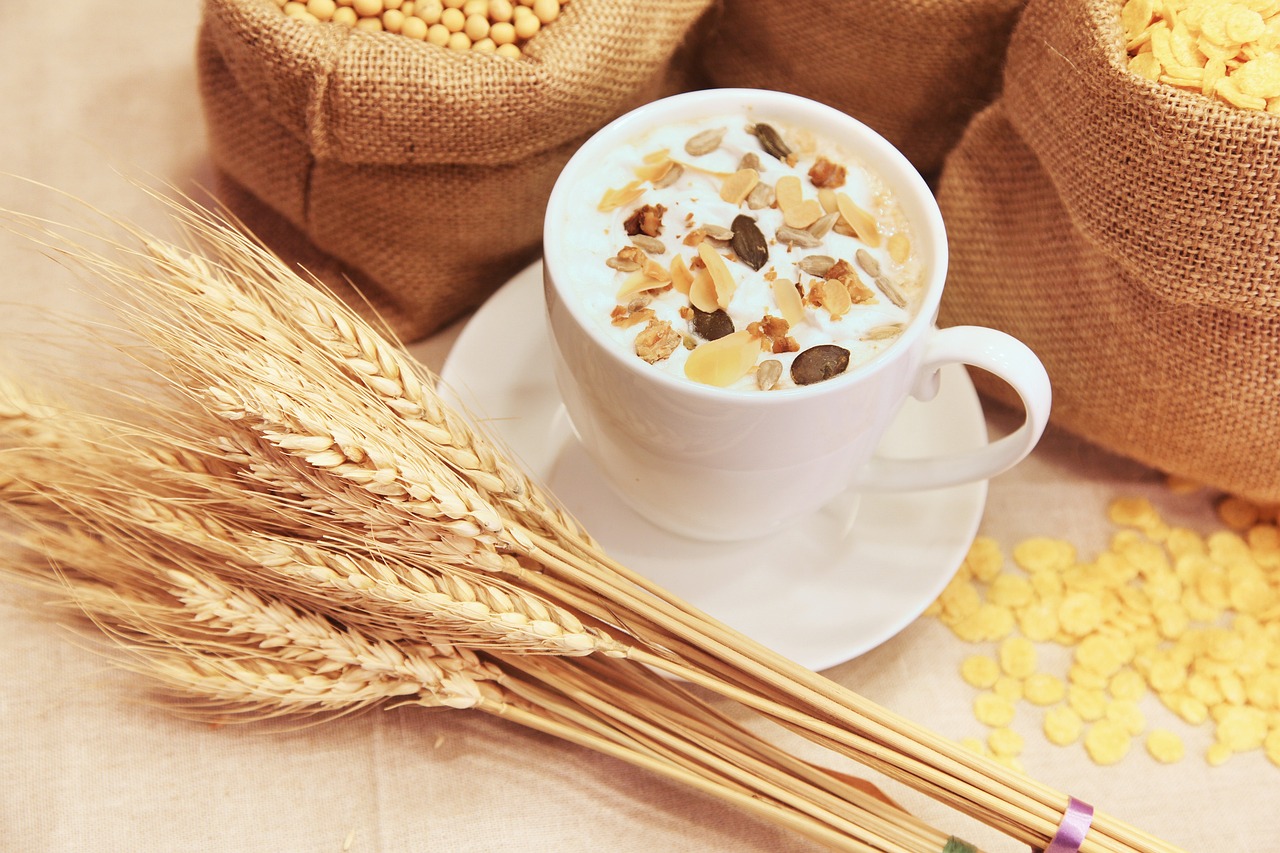
Choosing the Right Food for Senior Pets
When it comes to our beloved senior pets, choosing the right food is not just important—it's essential! As pets age, their bodies go through a myriad of changes that can affect their dietary needs. Think of it like upgrading an old car; it requires different fuel to run smoothly. Senior pets often need a diet that is lower in calories but higher in certain nutrients to support their aging bodies. So, how do you navigate this maze of options available at your local pet store or online? Let's dive into the key factors to consider.
First off, you want to look for high-quality ingredients. Just like we prefer fresh, whole foods over processed snacks, our pets do too! Ingredients should be recognizable and beneficial. Look for protein sources like chicken, fish, or lamb as the first ingredient. Avoid foods that list fillers like corn or soy, as these can lead to weight gain and other health issues.
Next, consider the caloric content. Senior pets are generally less active, which means they require fewer calories. However, they still need the right nutrients to maintain their health. A food that is specifically formulated for senior pets often has a lower calorie count while still providing the necessary vitamins and minerals. This helps in preventing obesity, which can lead to other health problems like diabetes or joint issues.
Another important aspect to think about is the specific dietary needs based on any health conditions your pet may have. For example, if your furry friend has arthritis, a diet rich in omega-3 fatty acids can help reduce inflammation. Similarly, pets with kidney issues may benefit from a diet that is lower in protein. Always read the labels carefully and consult your vet for tailored recommendations.
To make the selection process easier, here's a quick table summarizing some considerations:
| Factor | What to Look For |
|---|---|
| Ingredients | High-quality protein sources, no fillers |
| Caloric Content | Lower calories for less active pets |
| Health Conditions | Specific nutrients for conditions like arthritis or kidney issues |
Lastly, don't forget to check for certifications and recalls. Reputable brands often have certifications from organizations that ensure their products meet high standards. Also, stay informed about any recalls on pet food products to keep your pet safe.
In summary, choosing the right food for your senior pet is a blend of understanding their unique needs and being proactive about their health. It may seem overwhelming at first, but by paying attention to ingredients, caloric content, and specific health needs, you can make an informed decision that will keep your furry friend happy and healthy in their golden years.
Identifying Food Allergies and Sensitivities
As our furry companions age, they may develop food allergies or sensitivities that can significantly affect their health and happiness. Recognizing these issues early on is crucial for ensuring your senior pet enjoys a comfortable and fulfilling life. But how do you know if your pet is experiencing food-related problems? It can be a little tricky, but by being observant and proactive, you can identify potential allergens and make necessary adjustments to their diet.
First, it's essential to understand that food allergies often manifest in various ways. You might notice your pet exhibiting signs such as itchy skin, digestive upset, or even behavioral changes. For instance, if your dog suddenly starts scratching more than usual or if your cat is grooming excessively, these could be red flags. Additionally, gastrointestinal issues like vomiting, diarrhea, or flatulence may indicate that their current food isn't sitting well with them.
When trying to pinpoint food sensitivities, consider keeping a food diary. Document what your pet eats, including treats, and note any changes in their behavior or health. This record can help you identify patterns and potentially correlate specific foods with adverse reactions. For example, if you notice that your pet has an upset stomach after eating chicken-based food but not after consuming fish, it might suggest a sensitivity to chicken.
Moreover, certain ingredients are known to be common allergens for pets. These include:
- Beef
- Dairy
- Wheat
- Eggs
- Chicken
By being aware of these ingredients, you can take steps to eliminate them from your pet's diet if you suspect they are causing issues. However, it's essential to approach this process with caution. Abruptly changing your pet's food can lead to further digestive upset, so always aim for a gradual transition.
In some cases, it may be beneficial to consult with a veterinarian who can guide you through the process of identifying and managing food allergies. They may recommend an elimination diet, where you remove potential allergens from your pet's diet for a set period before slowly reintroducing them one at a time. This method can help pinpoint the exact cause of your pet's discomfort.
In summary, being vigilant about your senior pet's dietary reactions can significantly enhance their quality of life. By observing their behavior, maintaining a food diary, and consulting with a veterinarian, you can identify food allergies and sensitivities effectively. Remember, a happy pet is a healthy pet, and ensuring they have the right nutrition is a vital part of their care.
- What are the most common signs of food allergies in pets? Look for symptoms like itching, digestive issues, and changes in behavior.
- How can I transition my pet to a new food if they have allergies? Gradually introduce the new food while monitoring for any adverse reactions.
- Should I consult a vet if I suspect my pet has food allergies? Yes, a veterinarian can provide tailored advice and may suggest an elimination diet.
Common Allergens in Pet Food
When it comes to feeding our beloved senior pets, understanding common allergens in pet food is crucial for their health and happiness. Just like humans, pets can develop sensitivities to certain ingredients as they age, which can lead to discomfort and health issues. Some of the most prevalent allergens include:
- Beef - A common source of protein that many pets can develop an allergy to over time.
- Dairy - While some pets can tolerate dairy, many senior pets find it difficult to digest, leading to gastrointestinal issues.
- Wheat - A frequent filler in pet foods that can cause allergic reactions in some dogs and cats.
- Chicken - Surprisingly, chicken is another common allergen that can affect senior pets, even though it's often recommended as a lean protein source.
- Eggs - While nutritious, some pets may react negatively to eggs, leading to skin and digestive problems.
Recognizing these allergens is the first step in ensuring your pet's diet is both safe and nutritious. If you notice any signs of allergies—such as itching, excessive licking, or gastrointestinal upset—it's time to take a closer look at their food. Switching to a limited ingredient diet can often help alleviate these issues. These diets typically contain fewer ingredients, allowing you to pinpoint what your pet can and cannot tolerate.
Moreover, it’s essential to read the labels carefully. Ingredients are listed in order of quantity, so if you see any of these common allergens at the top of the list, it might be wise to consider alternatives. Always remember that even if a food is marketed as "hypoallergenic," it can still contain ingredients that may cause sensitivities in some pets.
As you navigate the world of pet food, consulting with your veterinarian can provide tailored advice on what to look for in ingredients and help you choose the best options for your senior pet. They can assist in identifying potential allergens based on your pet's health history and symptoms, ensuring a smooth transition to a new diet.
Consulting Your Veterinarian
When it comes to transitioning your senior pet to a new diet, is not just a good idea—it's essential. Think of your vet as your pet's personal nutritionist, equipped with the knowledge to guide you through the maze of dietary options available. Senior pets often have unique health conditions that require special attention, and your vet can help tailor a diet that meets their specific needs.
During your visit, don’t hesitate to discuss your pet’s current health status, any existing medical conditions, and their lifestyle. This information is crucial for your vet to recommend the most suitable food. For instance, if your furry friend has kidney issues, your vet may suggest a diet lower in protein and phosphorus. On the other hand, if your pet is battling obesity, a weight management formula might be the best route to take.
Moreover, your veterinarian can assist in identifying the right ingredients to look for in a new food. They can help you understand the nutritional labels, making it easier to choose a food that’s both safe and beneficial. This is particularly important for senior pets, as they may require added supplements or specific nutrients such as glucosamine for joint health or omega fatty acids for a shiny coat.
It’s also wise to discuss any concerns you may have regarding food allergies or sensitivities. Many senior pets develop these issues, and your vet can provide insights on how to recognize signs of allergies and suggest hypoallergenic options. If your pet has had a previous adverse reaction to a particular ingredient, make sure to mention it so your vet can guide you away from those allergens.
In summary, consulting your veterinarian is a critical step in ensuring a smooth transition to a new diet for your senior pet. They can provide personalized advice based on your pet's health history and current condition, helping to avoid potential pitfalls that could arise from a sudden dietary change. Remember, your vet is your partner in your pet's health journey, so don't hesitate to reach out with any questions or concerns you may have.
- How long should the transition period be? Generally, a transition period of 7-10 days is recommended, gradually mixing the new food with the old.
- What signs should I look for to know if my pet is adjusting well? Look for signs such as normal bowel movements, stable energy levels, and a healthy appetite.
- Should I be concerned if my pet refuses to eat the new food? Yes, if your pet refuses to eat for more than 24 hours, consult your veterinarian.
- Can I mix different brands of food? It’s best to stick to one brand that meets your pet's nutritional needs to avoid digestive upset.
Gradual Transition Techniques
Transitioning your senior pet to a new food doesn't have to be a daunting task. In fact, a gradual approach is key to ensuring a smooth shift without causing any digestive distress. Think of it like moving to a new house; you wouldn’t just toss everything into boxes and hope for the best, right? You’d carefully pack, sort, and transition your belongings. The same principle applies to your pet’s diet.
Start by mixing a small amount of the new food with their current food. This initial blend should consist of about 25% new food and 75% old food. Over the course of about a week, you can gradually increase the proportion of the new food while decreasing the old food. By the end of this period, your pet should be eating 100% of the new food. This slow transition helps their digestive system adjust to the new ingredients without overwhelming it.
During this transition, it’s crucial to monitor your pet’s response. Look for any signs of discomfort or digestive issues, such as vomiting, diarrhea, or changes in appetite. If you notice any adverse reactions, consider slowing down the transition process. Sometimes, pets may need a little extra time to adapt, and that’s perfectly okay.
Here’s a simple timeline you can follow for a smooth transition:
| Day | Old Food | New Food |
|---|---|---|
| 1-2 | 75% | 25% |
| 3-4 | 50% | 50% |
| 5-6 | 25% | 75% |
| 7+ | 0% | 100% |
Another effective technique is to incorporate the new food into your pet's favorite meals. For example, if your dog loves their morning kibble, mix in the new food with a bit of water or low-sodium broth to create a tasty gravy. This not only entices them to eat but also makes the transition feel less abrupt. It’s all about making this change as enjoyable as possible for your furry friend.
Lastly, patience is your best ally during this process. Every pet is unique, and while some may adapt quickly, others might take a little longer. Keep a close eye on their behavior and energy levels. If they seem to be adjusting well, give them a pat on the back. If they struggle, don’t hesitate to revert to the previous food for a few more days before trying again.
- How long should I take to transition my pet to new food? Generally, a transition period of 7-10 days is recommended, but it can vary based on your pet's specific needs.
- What should I do if my pet refuses to eat the new food? Try mixing it with their favorite treats or wet food. If they still refuse, consult your vet for alternative options.
- Can I mix different brands of food? It’s best to stick to one brand during the transition to avoid further digestive issues.

Monitoring Your Pet's Response
After you've successfully transitioned your senior pet to new food, the real work begins—monitoring their response to ensure they’re adapting well. Just like humans, pets can react differently to dietary changes, and it’s vital to keep a close eye on their behavior and health. Think of it as a little experiment; you’re the scientist, and your furry friend is the subject. Observing their reactions can provide you with valuable insights into how well the new food suits them.
One of the first things you should look for is how your pet's digestive system is handling the new diet. Signs of digestive issues can range from mild to severe, and recognizing these symptoms early can save you and your pet a lot of discomfort. For instance, if you notice your pet experiencing any of the following symptoms, it may indicate that the new food isn’t settling well:
- Vomiting: Occasional vomiting can happen, but frequent vomiting is a red flag.
- Diarrhea: Loose stools or changes in bowel movements can signify that your pet’s digestive system is struggling.
- Loss of appetite: If your pet suddenly refuses to eat, it’s time to reassess the food.
- Excessive gas: While some gas is normal, an increase in flatulence can indicate a problem.
In addition to digestive health, pay attention to your pet's behavior and energy levels. Changes in these areas can be telling signs of how well they’re adjusting to their new diet. For example, is your pet more lethargic than usual? Are they less interested in playtime or their favorite activities? Such changes may suggest that the new food isn't providing the necessary nutrients or energy they need. Conversely, if your pet seems more energetic and engaged, that’s a positive sign that they’re thriving on their new diet.
Another aspect to monitor is your pet’s coat condition. A shiny, healthy coat is often an indicator of good nutrition, while a dull or flaky coat can suggest dietary deficiencies. If you notice changes in their fur, it might be worth evaluating the new food's ingredient list to ensure it contains essential fatty acids and other nutrients that support skin and coat health.
It’s also important to keep a journal or log of any changes you observe. This can help you spot patterns over time and provide useful information if you need to consult your veterinarian. Documenting your pet's responses can be as simple as noting down their eating habits, energy levels, and any digestive issues in a notebook or a digital app. This way, you can easily track how they’re adapting over the first few weeks of their new diet.
If your pet shows any concerning signs or symptoms that persist beyond a few days, don’t hesitate to reach out to your veterinarian. They can help identify whether the new food is suitable or if an alternative might be better suited for your senior pet's unique needs.
In summary, monitoring your pet’s response to new food is an ongoing process that requires your attention and care. By being observant and proactive, you can ensure that your beloved companion remains happy and healthy during this transition. Remember, a little vigilance goes a long way in keeping your senior pet in tip-top shape!
Signs of Digestive Issues
When you introduce new food to your senior pet, it’s essential to keep a watchful eye on their digestive health. Just like humans, pets can experience a range of digestive issues when their diet changes. This can manifest in various ways, making it crucial for pet owners to be aware of these signs. For instance, if your furry friend suddenly becomes less enthusiastic about their meals, it might be a red flag. Additionally, changes in their bathroom habits can indicate that something isn’t sitting right with their tummy.
One of the most common signs of digestive distress is vomiting. If your pet is regurgitating their food or showing signs of nausea, such as excessive licking of the lips or pacing, it’s time to take action. Another indicator can be diarrhea, which can lead to dehydration if not addressed promptly. Keep an eye out for changes in the consistency or frequency of your pet’s stools. A sudden increase in flatulence can also be an indication that their digestive system is struggling to process the new food.
Here are some other signs that may suggest your pet is having digestive issues:
- Abdominal discomfort: If your pet is whining, hiding, or showing signs of pain when their abdomen is touched, this could indicate digestive problems.
- Change in appetite: A sudden decrease in appetite or refusal to eat can be a sign that your pet is experiencing discomfort.
- Weight loss: If your pet is losing weight unexpectedly, it’s crucial to investigate further, as this can indicate underlying health issues.
Monitoring your pet's behavior and habits closely during this transition is vital. If you notice any of these signs, it’s essential to consult with your veterinarian. They can help determine whether the new food is suitable for your pet and provide guidance on how to address any digestive issues that may arise. Remember, a happy pet is a healthy pet, so keeping their digestive system in check is key to their overall well-being!
Q: How long does it take for a pet to adjust to new food?
A: Generally, it can take anywhere from a few days to a couple of weeks for your pet to fully adjust to new food. Gradual introduction is key to a smooth transition.
Q: What should I do if my pet refuses to eat the new food?
A: If your pet refuses to eat the new food, try mixing it with their old food to make it more appealing. If they still refuse, consult your veterinarian for alternatives.
Q: Can I switch my senior pet to a grain-free diet?
A: While some senior pets may benefit from grain-free diets, it’s essential to consult your veterinarian before making such changes, especially if your pet has specific health conditions.
Q: How can I tell if my pet has food allergies?
A: Signs of food allergies can include itching, skin irritations, gastrointestinal upset, and ear infections. If you suspect allergies, consult your veterinarian for testing and recommendations.
Tracking Changes in Behavior and Energy Levels
When you switch your senior pet's food, it's not just about what goes into their bowl; it's also about how they respond to this change. Just like us, pets can have varying reactions to new diets, and understanding these changes is crucial for their overall well-being. You might be wondering, how do I know if my pet is adjusting well? The answer lies in observing their behavior and energy levels closely.
First, pay attention to your pet's energy levels. Are they more playful and active, or are they lethargic and uninterested in their favorite activities? A senior pet that is thriving on new food should show signs of increased vitality. You might notice them chasing after a toy or greeting you at the door with more enthusiasm. On the other hand, if they seem to be sleeping more than usual or avoiding playtime, it could be a sign that the new diet isn't sitting well with them.
Next, consider their overall demeanor. Changes in behavior can manifest in various ways. For instance, if your normally social dog is suddenly withdrawn or your cat is hiding more often, it might indicate discomfort or dissatisfaction with the new food. Have you ever felt off after trying a new dish? Pets can feel the same way! They might not be able to tell you directly, but their actions often speak volumes.
To help you track these changes effectively, consider keeping a journal or a simple log. You can jot down observations like:
- Energy levels (high, medium, low)
- Playfulness (active, indifferent, withdrawn)
- Appetite (eager to eat, hesitant, not eating)
- Bathroom habits (normal, diarrhea, constipation)
This kind of record can help you identify patterns over time. If you notice that your pet is consistently showing signs of distress or discomfort after meals, it may be time to consult with your veterinarian. They can help determine if the new food is suitable or if adjustments need to be made.
Additionally, consider your pet's interaction with you and their environment. Are they engaging more with family members or showing interest in exploring their surroundings? These behavioral changes can be positive indicators that they are adjusting well to their new diet. Conversely, if they seem more irritable or anxious, it might be a signal that something is amiss.
In conclusion, tracking changes in behavior and energy levels is a vital part of ensuring that your senior pet is adapting well to their new food. By being attentive and proactive, you can help your beloved companion enjoy their golden years with the right nutrition and care.
Q: How long does it take for a pet to adjust to new food?
A: Typically, it can take anywhere from a few days to a couple of weeks for pets to adjust to new food. It's important to transition gradually to minimize digestive upset.
Q: What should I do if my pet refuses to eat the new food?
A: If your pet refuses to eat the new food, try mixing it with their old food or adding some tasty toppings. If they continue to refuse, consult your veterinarian.
Q: Are there specific signs I should look for that indicate my pet is not adjusting well?
A: Look for signs such as vomiting, diarrhea, lethargy, or changes in appetite. If you notice any of these symptoms, it's best to consult your veterinarian.
Frequently Asked Questions
- How long should I take to transition my senior pet to new food?
It's generally recommended to take about 7 to 10 days for a smooth transition. Start by mixing a small amount of the new food with the old food, gradually increasing the new food while decreasing the old food. This helps your pet's digestive system adjust without causing upset.
- What signs should I look for to ensure my pet is adjusting well?
Keep an eye out for signs like normal bowel movements, a return to their usual energy levels, and a healthy appetite. If you notice any vomiting, diarrhea, or lethargy, it may indicate that the new food isn't agreeing with your pet.
- Can I mix different brands of pet food during the transition?
It's best to stick with one brand of new food during the transition to avoid confusion and potential digestive issues. Mixing brands can lead to inconsistent nutrient profiles and may upset your pet's stomach.
- What if my senior pet refuses to eat the new food?
If your pet is hesitant to try the new food, try warming it slightly or mixing in a bit of their favorite treats to entice them. However, if they continue to refuse, consult your veterinarian for alternative options that may be more appealing.
- Are there specific ingredients I should avoid in senior pet food?
Yes! Avoid foods with artificial additives, excessive fillers, and common allergens like wheat, corn, and soy. Look for high-quality proteins and wholesome ingredients that cater to your pet's specific dietary needs.
- Should I consult my veterinarian before changing my pet's food?
Absolutely! Your veterinarian can provide personalized recommendations based on your pet's health history and specific needs. They can help ensure that the new food supports your pet's overall well-being.
- What if my pet has food allergies?
If you suspect your senior pet has food allergies, consult your vet for a proper diagnosis. They may recommend an elimination diet or suggest hypoallergenic food options that can help avoid triggering allergic reactions.
- How can I monitor my pet's health during the transition?
Keep a close watch on their behavior, energy levels, and any changes in their bathroom habits. Documenting these changes can help you identify any potential issues early and discuss them with your veterinarian if needed.



